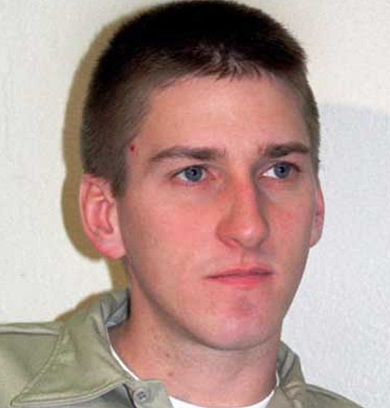Timothy McVeigh wiki, bio, age, death, sister, interview, parents

Timothy McVeigh was indicted for the 1995 Oklahoma City besieging, perhaps the deadliest demonstration of fear mongering in American history. He was executed for his violations.
Who Was Timothy McVeigh?
Brought up in Pendleton, New York, Timothy McVeigh built up an enthusiasm for weapons and his nonconformist leanings as a tormented adolescent.
He presented with unique excellence in the Persian Gulf War, however became progressively baffled with the U.S. government after his release.
Following a very long time of arranging, on April 19, 1995, McVeigh exploded explosives outside the Alfred P. Murrah Federal Building in Oklahoma City, Oklahoma, bringing about 168 losses and another few hundred injured casualties. McVeigh was caught soon after the shelling and was executed by deadly infusion on June 11, 2001.
Early Life
Timothy James McVeigh was conceived on April 23, 1968, in Lockport, New York, and grew up close by in the average workers town of Pendleton.
After his folks separated, he lived with his dad and built up an enthusiasm for firearms through objective practice meetings with his granddad.
It was during this time he read The Turner Diaries, an enemy of government tome by neo-Nazi William Pierce. The book portrayed a shelling of a bureaucratic structure and energized McVeigh's suspicion about an administration plot to cancel the Second Amendment.
Tall, thin and calm, McVeigh was tormented as an adolescent. He was likewise exceptionally brilliant, in any event, procuring an incomplete school grant in the wake of moving on from secondary school in 1986, however he just quickly went to a business college before dropping out.
In 1988, McVeigh enrolled in the U.S. Armed force and turned into a model fighter, gaining the Bronze Star for grit in the Persian Gulf War. He got an encouragement to go for the Army's extraordinary powers however surrendered after just two days, and was released in 1991.
McVeigh at first came back to New York yet before long took up a peripatetic way of life as he followed the firearm show circuit, selling weapons and lecturing the disasters of the legislature.
He intermittently invested energy with Army pals Terry Nichols and Michael Fortier, who shared McVeigh's enthusiasm for firearms and scorn of government authority.
Rising Anger
Two occasions including the FBI's activities against separatists added fuel to McVeigh's annoyance toward the administration. To start with, in the late spring of 1992, white rebel Randy Weaver was occupied with a deadlock with government operators at his lodge in Ruby Ridge, Idaho.
He was associated with auctioning unlawful sawed-off shotguns. The attack brought about the demise of Weaver's child and spouse.
At that point, in April 1993, government specialists encompassed the Texas compound of a strict association called the Branch Davidians to capture their pioneer, David Koresh, on illicit weapons charges.
On April 19, McVeigh viewed on TV as the FBI raged the compound, bringing about a firestorm that murdered many Branch Davidians, including youngsters.
Oklahoma City Bombing
In September 1994, McVeigh set up his arrangement to obliterate the Alfred P. Murrah Federal Building in Oklahoma City, Oklahoma. With associates Nichols and Fortier, McVeigh obtained huge amounts of ammonium nitrate manure and gallons of fuel to shape an exceptionally unstable touchy.
McVeigh picked the Murrah Federal Building since it gave magnificent camera edges to media inclusion. He needed to make this assault a stage for his enemy of government message.
On the morning of April 19, 1995, the second commemoration of the FBI attack on the Branch Davidian compound, McVeigh left a Ryder truck stacked with the dangerous substance before the Murray building.
Individuals were coming to work and on the subsequent floor, youngsters were showing up at the day-care focus. At 9:02 a.m., the blast ripped the whole north divider off the structure, decimating every one of the nine stories.
In excess of 300 different structures in the prompt region were harmed or crushed. In the rubble were 168 casualties, including 19 small kids, and another 650 or more injured.
Capture, Trial and Execution
Early reports recommended that a Middle Eastern psychological militant gathering may have been mindful, yet inside days, McVeigh was viewed as the essential suspect.
He was at that point in prison, having been pulled over soon after the shelling for a tag infringement, during which time he was seen as conveying an illicitly disguised handgun. Nichols before long gave up to specialists, and the two were arraigned for the besieging in August.
Following a five-week-long preliminary that started in April 1997, McVeigh was indicted following 23 hours of thought, and he was condemned to death. The next year, Nichols was condemned to life in jail.
While waiting for capital punishment, McVeigh was met for a history, American Terrorist, by Lou Michel and Dan Herbeck. McVeigh discussed the besieging with some pride, alluding to the youthful casualties as "blow-back." Meanwhile, his solicitations for an intrigue and another preliminary were dismissed.
On June 11, 2001, after an endeavored remain of execution, government jail specialists put a needle in McVeigh's correct leg and siphoned a destructive stream of medications into his veins. He passed on in practically no time, and his body was incinerated.